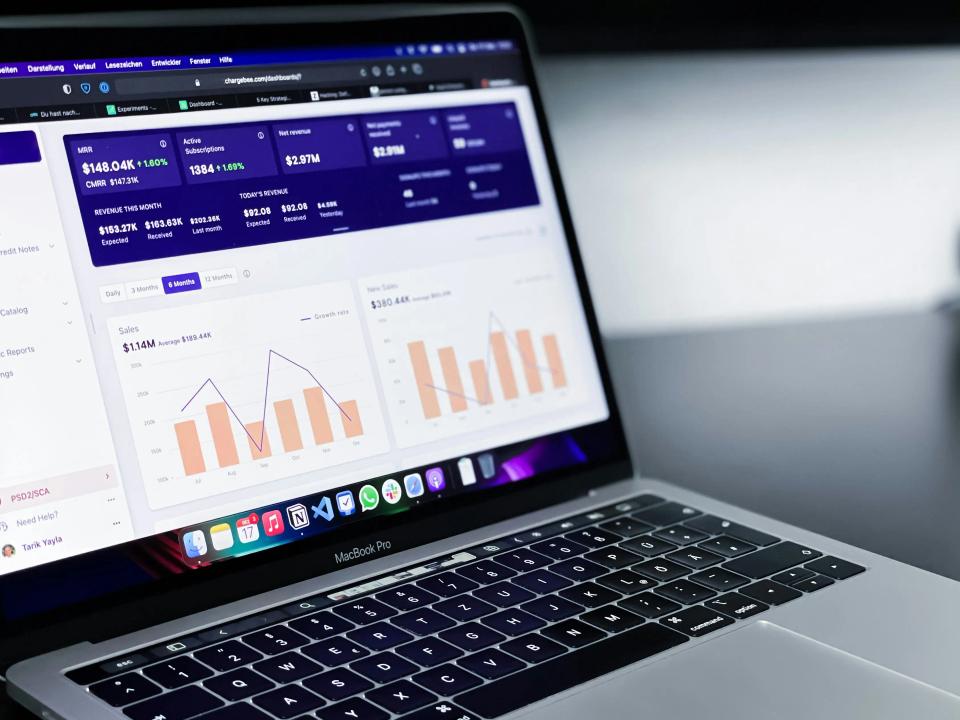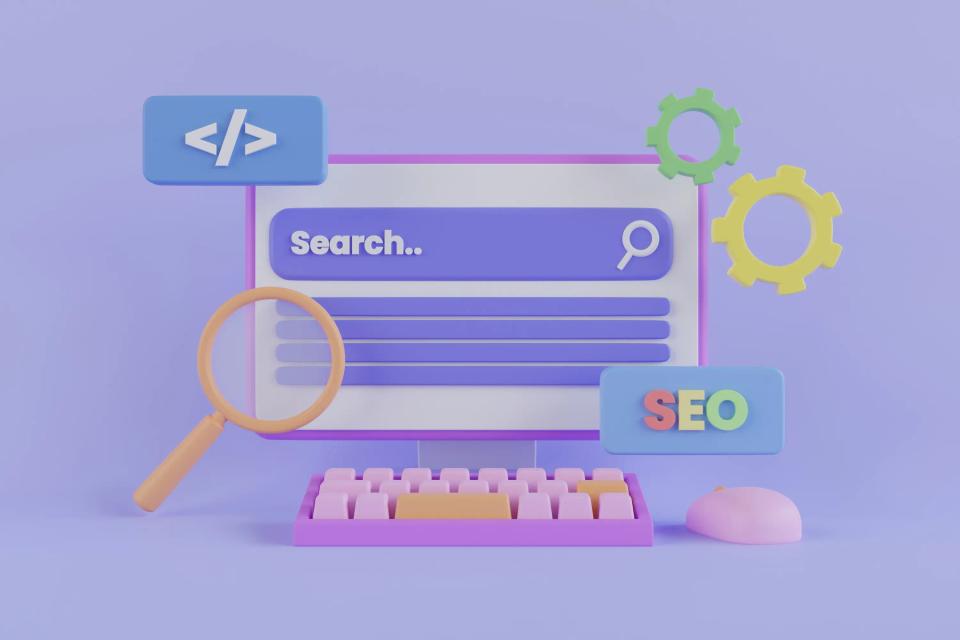Stop for a moment. Did you know that a mere one-second delay in your website’s load time can slash conversions by 7%? That’s a gut punch to your bottom line, and the biggest culprit is almost always hiding in plain sight: your images.
Most guides you’ll find online are stuck in the past. They’ll tell you to name your files correctly and write some alt text. That’s table stakes, and it’s no longer enough to win. In today’s brutal digital arena, unoptimized images are anchors dragging down your site speed, sabotaging your user experience, and crushing your Core Web Vitals scores.
But this isn't another tired list of basic "image SEO tips." This is a technical playbook, a step-by-step battle plan forged from over 15 years of in-the-trenches experience. You are about to learn the advanced strategies that separate the dominant brands from the digital ghosts. At CaptivateClick, we build captivating digital experiences on a foundation of technical precision, and this guide distills that expertise into actionable steps you can take today.
Phase 1: Pre-Upload Foundation - Setting Images Up for Success
Every image you upload is a choice. It can either be a dead weight that slows you down or a strategic asset that propels you forward. The victory is decided before the image ever touches your website.
Step 1: Strategic File Naming
Think about it. Does IMG_4082.jpg tell Google anything about your content? It’s a massive missed opportunity, a blank space where a powerful signal should be.
You must be deliberate. Before you upload, rename your files with descriptive, keyword-rich names that scream relevance. Use hyphens to separate words, like advanced-technical-seo-image-optimization-guide.jpg, because that’s the language search engines understand. This simple act gives Google its first crucial clue about what your image represents, setting the stage for everything that follows.
Step 2: Choosing the Optimal File Format
The file format you choose is a critical decision that directly impacts both quality and speed. Using the wrong one is like bringing a knife to a gunfight—you’re immediately at a disadvantage. The old standards like JPEG (for photos) and PNG (for graphics needing transparency) still have their place, but the game has changed.
The modern web demands more. Next-gen formats like WebP are the new standard, offering superior compression that can reduce file sizes by 25-34% compared to JPEG without a noticeable loss in quality, according to Google. It’s supported by every major browser, making it a non-negotiable for performance. For those on the absolute cutting edge, AVIF offers even more aggressive compression, though you’ll need to keep an eye on its growing browser support.
Step 3: Intelligent Compression & Resizing
Uploading a massive 4000-pixel image and letting your website’s code shrink it down is a cardinal sin of web performance. You are forcing every user, especially those on mobile, to download a gigantic file they don’t need. This lazy approach kills load times and frustrates visitors into leaving.
The professional approach is twofold: resize and compress. First, resize your images to the exact dimensions they will be displayed at on your site. Second, run them through an intelligent compression tool like Squoosh or TinyPNG to strip out unnecessary data. As noted by experts in advanced image optimization, this pre-upload discipline is fundamental to achieving the lightning-fast load times that users and search engines demand.
Phase 2: On-Page Implementation - The Core SEO Signals
Once your images are perfectly prepared, it’s time to deploy them with tactical precision. The code and content surrounding your images provide the essential context that search engines need to understand their purpose and value.
Step 4: Mastering Alt Text for Accessibility & SEO
Alt text is not just a keyword-stuffing box. Its primary purpose is a noble one: to describe the image for visually impaired users relying on screen readers. Getting this right is a win for humanity and a win for SEO.
Your mission is to be descriptive and concise. Paint a picture with words that accurately represents the image. If a relevant keyword fits naturally into that description, include it, but never force it. A great alt text serves both your audience and the algorithm, a core principle of any complete image optimization strategy.
Step 5: Leveraging Image Titles, Captions, and Surrounding Text
Your image doesn’t exist in a vacuum. The content that surrounds it is one of the most powerful contextual signals you can send to Google. The algorithm is smart enough to read the paragraph before your image and the caption below it to understand its relevance.
While the image title attribute has a minor SEO impact, captions are a different story. They are highly visible, improve user engagement, and provide direct context. Ensure the text on the page directly supports the image, creating a cohesive and relevant experience that tells search engines exactly what your content is about. This holistic approach is a cornerstone of modern technical SEO services.
Phase 3: The Advanced Technical Layer - Supercharging Performance & Delivery
This is where we separate the amateurs from the professionals. The following technical implementations are what truly unlock elite performance, turning your website into a high-speed, responsive machine.
Step 6: Implementing Responsive Images with srcset
Serving a massive, high-resolution desktop image to a tiny mobile screen is a performance disaster. It wastes bandwidth, slows down loading, and is a clear signal to Google that you aren’t prioritizing the mobile experience—a fatal flaw in a mobile-first world. The solution is the powerful srcset attribute.
This clever piece of HTML allows you to specify a list of different-sized image files for the browser to choose from. The browser then intelligently selects the most appropriate image based on the user's screen size and resolution. According to guidance from Google Developers, this is the definitive way to deliver optimized visuals across all devices.
Here’s a simple example of how it works:
<img src="small-image.jpg"
srcset="medium-image.jpg 1000w,
large-image.jpg 2000w"
sizes="(min-width: 800px) 50vw, 100vw"
alt="A responsive image example.">
This code tells the browser which image to load based on the viewport width, ensuring every user gets a fast, perfectly sized image. This is a key part of a broader strategy for responsive web design techniques for visually appealing brand identities.
Step 7: Leveraging Browser-Native Lazy Loading
Why force a user to download every single image on a page the moment they land? It’s inefficient and dramatically slows down the initial load time, harming your First Contentful Paint (FCP) score. Lazy loading is the elegant solution: it defers the loading of off-screen images until the user actually scrolls down to them.
In the past, this required complex JavaScript libraries. Today, it’s beautifully simple. By adding the loading="lazy" attribute directly to your image tag, you instruct the browser to handle it automatically. This single line of code can have a massive positive impact on your Core Web Vitals, a set of metrics that Google uses as a key ranking factor, as emphasized by multiple SEO experts.
Step 8: Serving Images via a Content Delivery Network (CDN)
If your audience is global, serving images from a single server location is a recipe for slow load times. A Content Delivery Network (CDN) solves this by distributing and caching your images on a network of servers around the world. When a user visits your site, the images are delivered from the server geographically closest to them, drastically reducing latency.
Using a CDN is a foundational element of SEO best practices for site speed. Services like Cloudflare or BunnyCDN not only speed up delivery but often include powerful features for on-the-fly image optimization, automatically converting images to WebP and resizing them for different devices. This is a non-negotiable for any serious business looking to provide a world-class user experience.
Phase 4: Next-Level Indexing & Visibility
Perfectly optimized images are useless if Google can’t find and understand them. These final steps ensure your visual content gets the visibility it deserves, driving traffic from image search and enhancing your presence in the SERPs.
Step 9: Creating and Submitting an Image Sitemap
Don’t assume Google will find every image on your site, especially if they are loaded with JavaScript. An image sitemap is an explicit instruction manual you give to search engines, pointing them directly to every important image you want indexed. It’s a critical tool for ensuring comprehensive discovery.
The XML structure is straightforward, allowing you to list the location, title, and caption for each image. Once created, you simply submit it through Google Search Console. This step ensures your visual assets aren’t left behind and is a key part of a comprehensive technical SEO checklist.
Step 10: Using Structured Data (Schema Markup) for Images
This is your ultimate advantage. Schema markup is a vocabulary of code that you add to your site to provide explicit, detailed information to search engines. Using ImageObject schema, you can tell Google everything about your image, from its content to its creator.
Even more powerfully, you can nest ImageObject schema within other types like Article, Recipe, or Product. This tactic dramatically increases your chances of earning a rich snippet in search results, making your listing more visually appealing and boosting click-through rates. As leading SEO authorities like Moz confirm, structured data is essential for standing out in a crowded search landscape.
Here is a simple JSON-LD example for an image within an article:
<script type="application/ld+json">
{
"@context": "https://schema.org",
"@type": "Article",
"headline": "Advanced Image SEO",
"image": {
"@type": "ImageObject",
"url": "https://captivateclick.com/images/technical-seo-image-optimization-guide.jpg",
"width": 1200,
"height": 800
}
}
</script>
From Optimized Images to a Captivating Brand Experience
We’ve moved from the foundational pre-upload preparations to the core on-page signals. We’ve implemented the advanced technical layer for lightning-fast delivery and deployed next-level indexing tactics to maximize visibility. You now have the complete playbook.
Let’s be clear: advanced image optimization is no longer optional. It is a critical pillar of technical SEO that directly fuels a superior user experience, satisfies Google’s Core Web Vitals, and ultimately, drives revenue to your bottom line. The impact of technical optimization on SEO rankings is undeniable, and images are at the heart of it.
Want to keep these steps handy? Download our free Advanced Image SEO Checklist to ensure you never miss a critical step in your optimization workflow.
Technical SEO is a deep, complex field. If you’d rather focus on running your business while our experts handle the technical details, we’re here to help. Contact CaptivateClick today for a free technical SEO audit and discover how we can elevate your brand’s performance to the next level.













